Between stunning waterfalls or breathtaking landscapes, the inland area of Portugal is rich in natural wonders. Join All About Portugal on this itinerary through 10 places where Nature was truly generous, and you won't regret it. We start in Trás-os-Montes, right in the North, we go to the border with Spain and then go down to Alentejo, without forgetting the beautiful Serra da Estrela region.
Pitões das Júnias Waterfall, Montalegre

It is in the Peneda-Gerês National Park, and in the municipality of Montalegre, that you will find this waterfall, which features a first waterfall approximately 30 meters high, followed by others that invite invigorating dips on warmer days. It is the crystal clear waters that flow near the ruins of the Santa Maria das Júnias Monastery that supply the waterfall, which is surrounded by a centuries-old oak forest, source of several legends.
Fisgas de Ermelo, Mondim de Basto
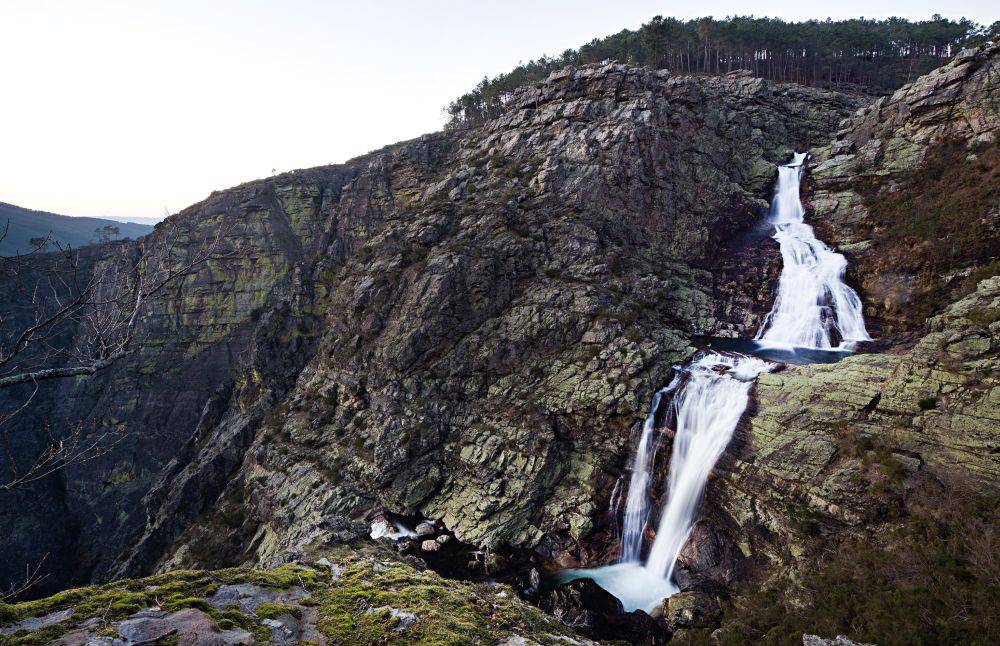
They are one of the main attractions in the Trás-os-Montes municipality of Mondim de Basto and one of the most iconic places in the Alvão Natural Park, due to the beautiful setting they create. They drop 400 meters and are considered one of the largest waterfalls in Europe. They cross quartzite rocks that are 480 million years old, whose fracturing allowed the Olo River to “get stuck” in them. It is from this phenomenon that its popular name comes from ("fisga" means narrow and long opening in Portuguese).
São João das Arribas Viewpoint, Miranda do Douro
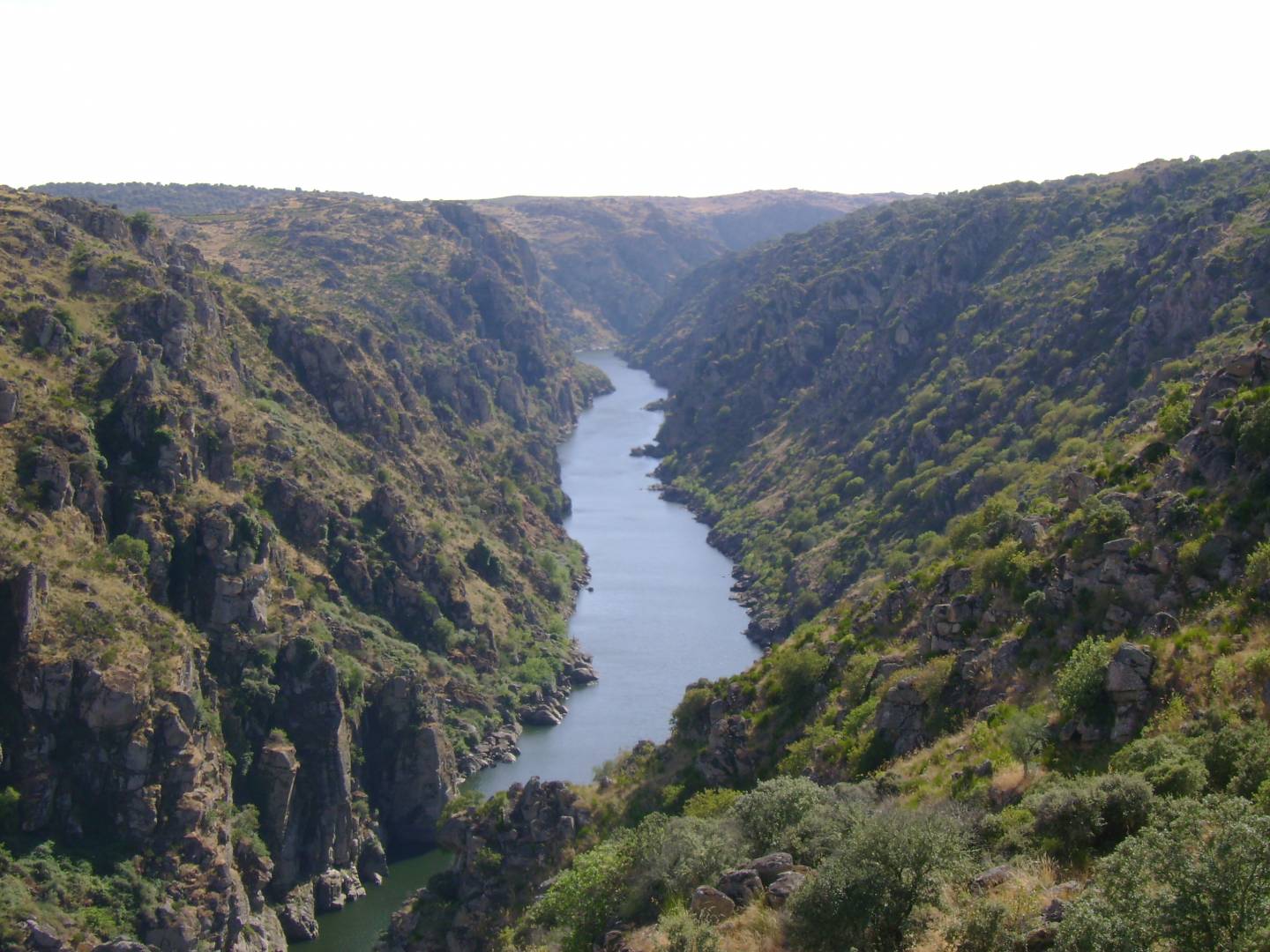
Breathtaking and overwhelming are two of the best adjectives that can be used to describe the landscape you enjoy at one of the most emblematic viewpoints in the Douro International Natural Park, right in the inland area of Portugal. The almost perfect harmony between the immensity of the panorama in which the Douro valley blends with the rocky cliffs is worth of being appreciated for a long time. The quietness you can enjoy at this viewpoint, located at an altitude of 646 meters, is remarkable.
Cabeça do Velho, Gouveia

It is not just natural wonders in which water is the most remarkable element that stand out in the inland area of Portugal. An example is Cabeça do Velho (Old Man's Head), located in Serra da Estrela, 1,200 meters above sea level. It is a granite rock shaped by erosion and which, when viewed from a certain angle, resembles the shape of a human head with a very prominent “nose”. In the neighboring municipality of Seia, there is Cabeça da Velha (Old Woman's Head), another granite block with a peculiar shape, reminiscent of the head of a toothless elderly woman.
Poço do Inferno, Manteigas
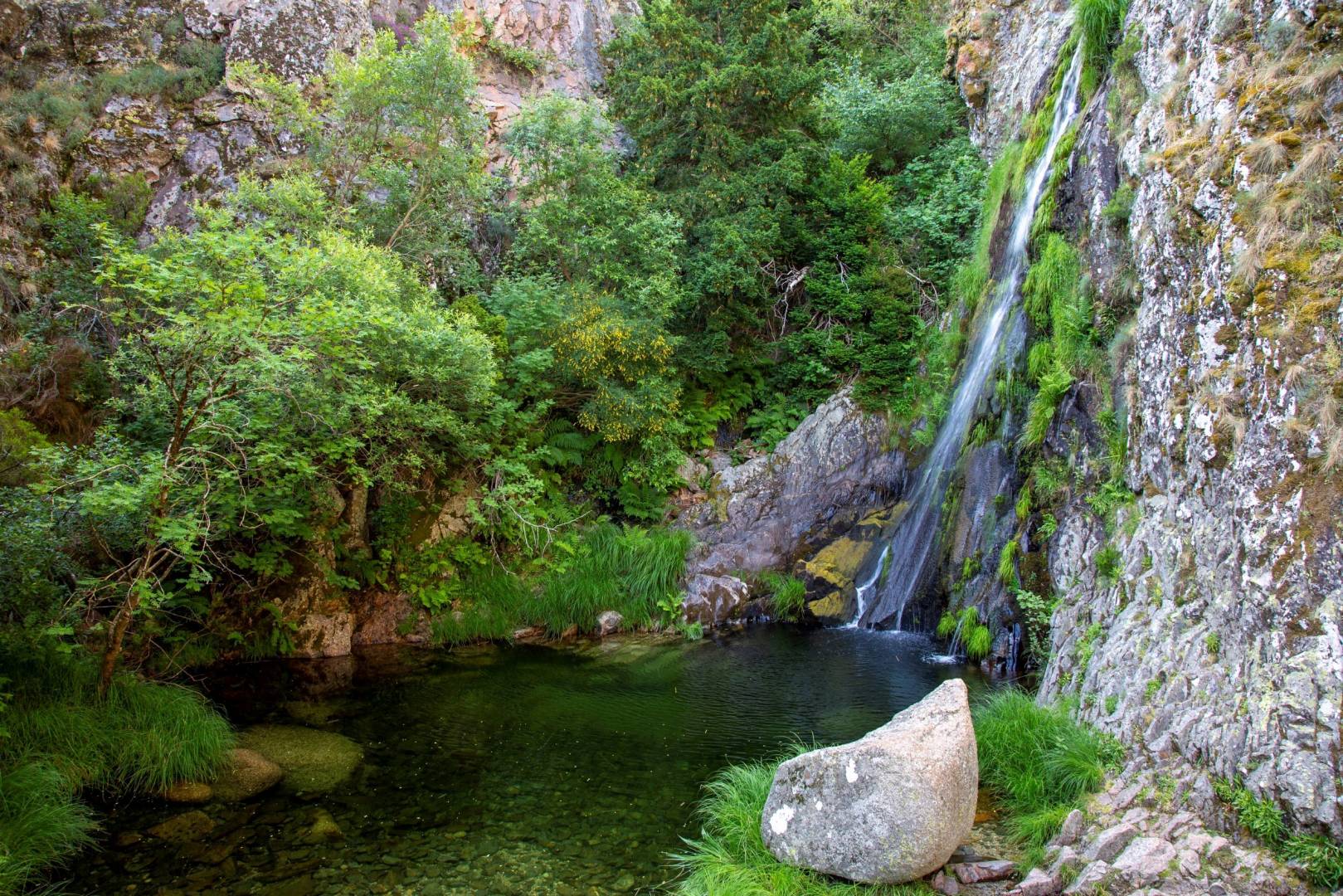
The access may not be the best, but the effort is worth it when you reach this natural treasure in the municipality of Manteigas. Located at an altitude of 1,080 meters, this waterfall is a kind of “gorge” opened by Ribeira de Leandres, a tributary of the Zêzere River, which descends between the shale and granite. The crystal-clear waterfall is around 10 meters and this site of geological interest attracts many people due to the beautiful scenery it provides, especially in the summer, but it also offers unforgettable “postcards” in the winter.
Zêzere Glacier Valley, Manteigas

It is another of the ex-libris of the Serra da Estrela Natural Park. It is “U” shaped and is one of the largest glacial valleys in Europe, with 13 kilometers. This remarkable legacy of Nature clearly demonstrates the effects of glaciation that occurred thousands of years ago and how this action shaped the landscape. It has remarkable geological beauty and biogenetic reserves of high scenic and natural value. Another very photogenic point in the Glacier Valley is Covão d’Ametade, an ancient glacial lagoon that presents great beauty in its surroundings.
Fraga da Água d’Alta Waterfall, Oleiros
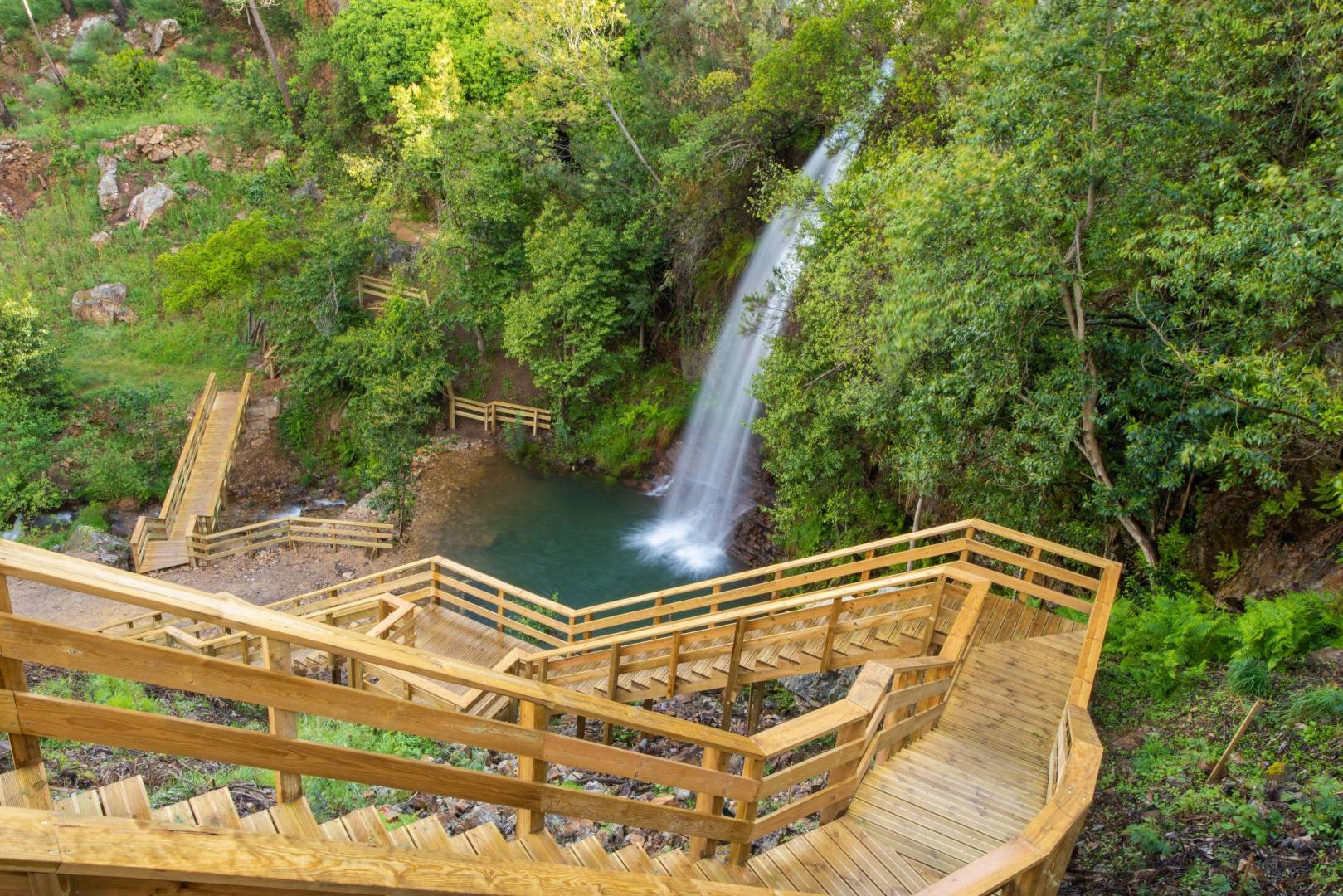
It is the largest waterfall in Beira Baixa with a 50 meters drop and is one of the most visited points in the municipality of Oleiros. It is astonishing and stands out for its enchanting sequence of three restless and crystalline veils of water. The well-structured walkways of Orvalho, the parish in which it is located, allow you to see Fraga da Água d’Alta perfectly from different angles. It is also worth highlighting the biodiversity in the area, where rare species abound.
Portas de Ródão, Vila Velha de Ródão
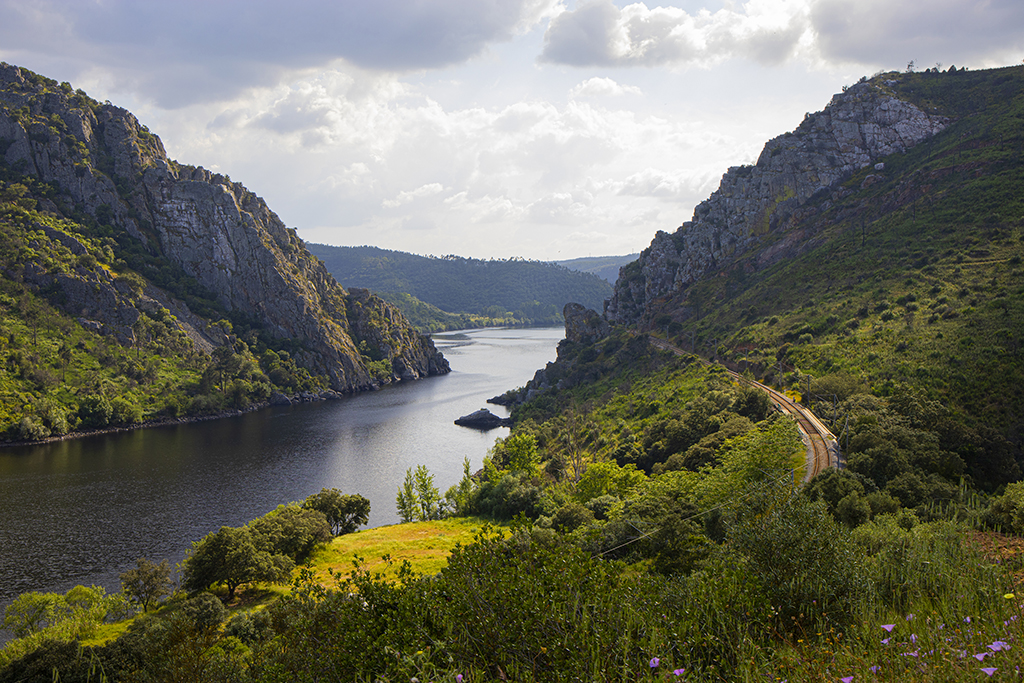
It is another natural wonder that leaves us overwhelmed by the breathtaking landscape it presents. This natural geological formation occurs between the municipalities of Vila Velha de Ródão and Nisa, when there is a choke point about 45 meters wide in the watercourse of the Tagus River, which combines perfectly with the quartzite ridge of Serra do Perdigão. This place is a must-see spot in this region and is home to the largest colony of griffon vultures in Portugal.
Penedo Furado, Vila de Rei
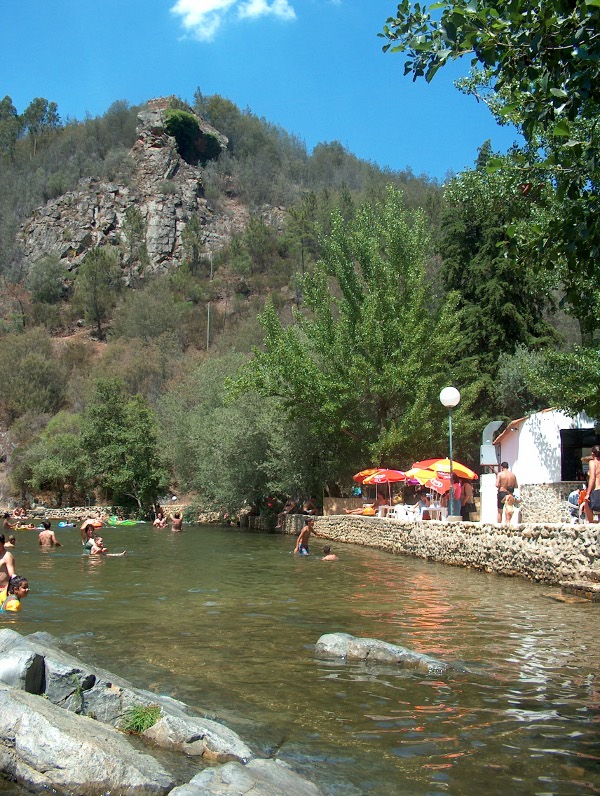
The huge rock with a projecting funnel-shaped opening that presents a succession of several small waterfalls, observable a few meters away, gives its name to this authentic natural paradise that is considered the most visited seaside resort in the municipality of Vila de Rei. The highest point, the Miradouro (Viewpoint) offers stunning views over mountains, hills full of pine forests or the Castelo do Bode Dam. The river beach of Penedo Furado seduces by the quality of the water that flows through the passage in the rocks.
Pulo do Lobo, Mértola e Serpa
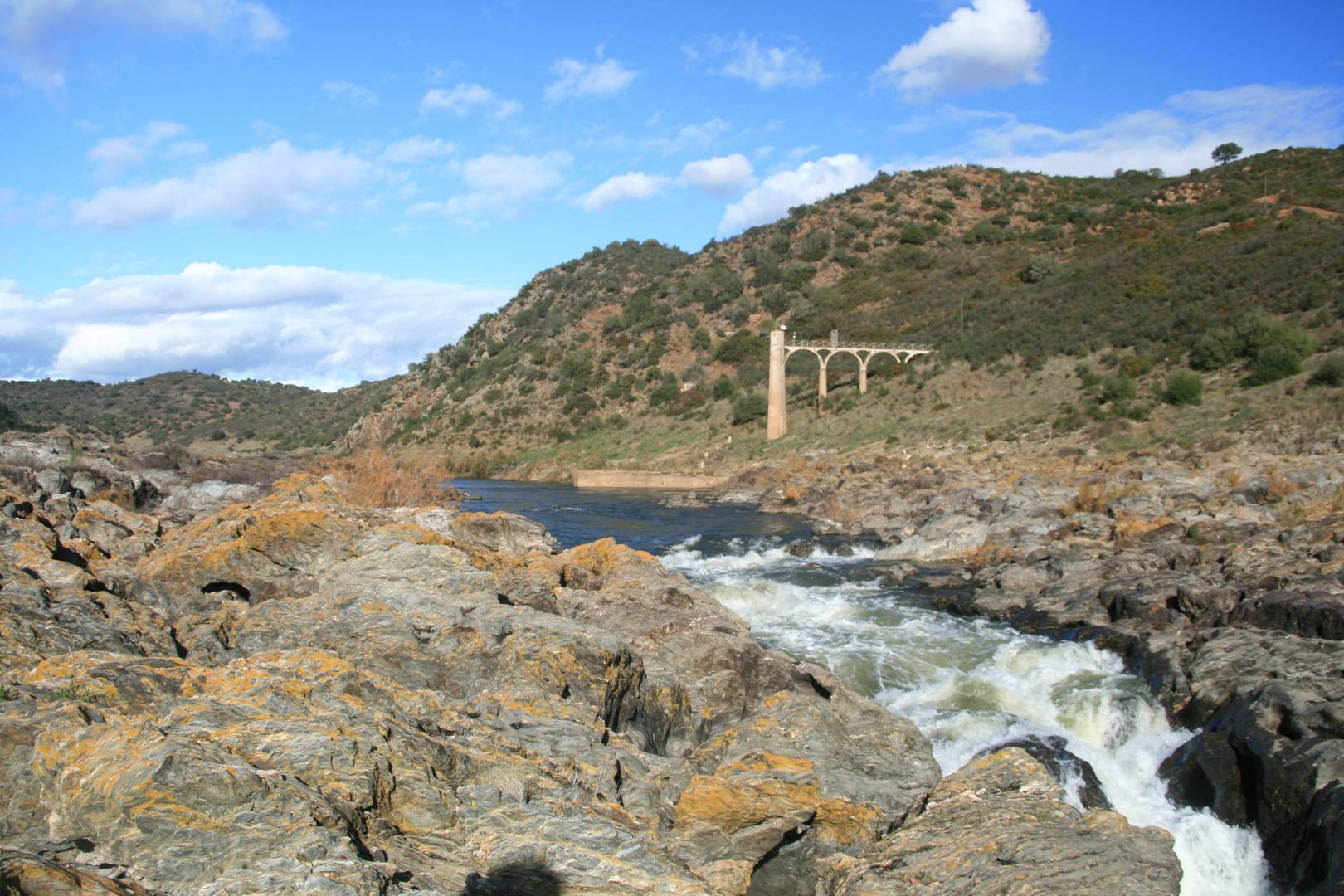
Portuguese Nobel Prize winner for Literature José Saramago once wrote that Pulo do Lobo was the point where the Guadiana River “boils between very hard walls, the waters roar and gnaw away, one millimeter per century, per millennium, a bit in eternity”. Located between the Alentejo municipalities of Mértola and Serpa, this waterfall where the Guadiana falls from a height of 16 meters is one of the highlights of the Guadiana Valley Natural Park. It is a relevant geosite that stands out for its grandeur and biodiversity.
Recommended
